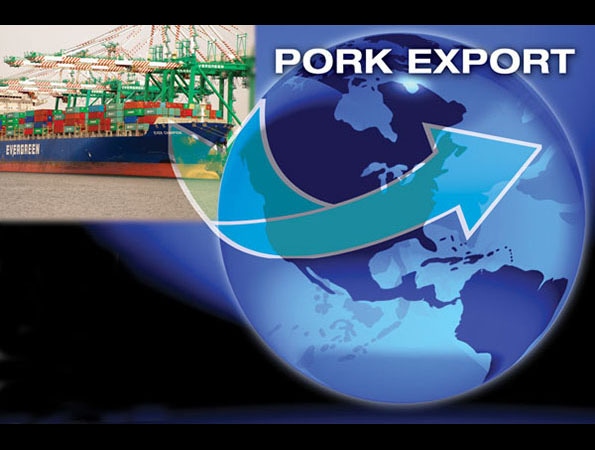April 18, 2016

The Trans-Pacific Partnership is certain to dominate the conversation about agricultural trade agreements in 2016, but countries other than the United States are negotiating a number of other bilateral free trade agreements that will also play a significant role in shaping the future of global pork trade.
For pork-exporting countries participating in TPP (mainly the United States, Canada, Mexico and Chile), Japan is certainly the primary focus due to its strong demand for imported pork, as well as its complex gate price system and other obstacles that have long frustrated trading partners.
The largest competitor U.S. pork currently faces in Japan is the European Union, and it is important to note that the EU-Japan Economic Partnership Agreement negotiations are in their final stages and could be completed later this year.
EU pursuing agreements in Japan, Philippines; Vietnam already complete
The EU pork industry intensified its focus on Japan in 2014 after losing access to Russia – traditionally the largest destination for European pork. After several years of modest growth, EU exports to Japan jumped 35% in 2014, reaching 337,502 metric tons. European suppliers do not ship chilled pork to Japan because of the distance involved, but have been very aggressive in their promotion of thawed frozen pork, such as Iberico branded pork from Spain, which now competes with chilled U.S. pork at retail. Don’t expect the EU industry to dial back its efforts in Japan anytime soon, especially if, as expected, it makes market access gains through the EU-Japan Economic Partnership Agreement.
Another TPP participant — Vietnam — has completed an FTA with the EU. The agreement isn’t expected to take effect until at least 2017, but European pork is already making strides in Vietnam. EU exports soared from just 3,239 mt in 2013 to 37,457 mt last year, with about two-thirds of the volume being variety meat. Vietnam currently imposes duty rates ranging from 8% for offal to 25% for chilled muscle cuts. The EU-Vietnam FTA will phase these rates to zero over eight to 10 years, similar to TPP.
The EU will formally launch FTA negotiations with the Philippines later this year. These talks hold particular interest for competing pork suppliers because the Philippines imposes a 30% duty on muscle cuts imported under a quota and 40% for out-of-quota imports. Duty rates for pork variety meat — 10% on most items — are less onerous, but still a significant concern in this price-sensitive market.
Canada eyes better access in Philippines, Europe, Latin America
Canada is also eyeing an FTA with the Philippines. Both U.S. and Canadian pork have lost market share in the last two years as the Philippines emerged as a more critical destination for EU pork — especially pork fat and variety meat. Canada reported exports to the Philippines of nearly 48,000 mt in 2013, but volume averaged less than 30,000 mt the past two years.
Canada is also involved in FTA negotiations with the Dominican Republic, which has recently emerged as an excellent market for U.S. pork. U.S. exports have benefited from the tariff relief achieved in the U.S.-Central America-DR FTA (popularly known as the Central America Free Trade Agreement), which entered into force in 2006. Duties of 25% were eliminated on in-quota imports and the out-of-quota rate is now just 9%. U.S. pork currently holds 95% of the imported pork market in the DR, with last year’s exports reaching a record 23,265 mt. By contrast, Canada shipped less than 500 mt to the DR last year.
Canada is also negotiating with Guatemala, Nicaragua and El Salvador, which are also part of CAFTA. Central America is a strong growth region for U.S. pork, with exports reaching a record 58,568 mt last year and U.S. pork accounting for more than 80% of exports to the region. Guatemala is the second-largest market for U.S. pork in Central America, taking nearly 15,000 mt in 2015.
Canada and the EU recently finalized the Comprehensive Economic and Trade Agreement. This agreement offers duty-free access to significant volumes of Canadian pork in the highly restricted European market.
Mexico, Korea to launch initial FTA talks this year
South Korea has FTAs in place with all of its major pork suppliers, with the exception of Mexico. This could change in years to come, as the two countries recently announced that they will launch working-level FTA talks in 2016. Korea’s imports of Mexican pork increased 14% last year to 10,331 mt. The growth was primarily in chilled pork, with Mexico emerging as Korea’s top chilled supplier (5,536 mt, up 38% year-over-year) and capitalizing on Korea’s demand for single-ribbed belly. Mexican chilled pork still pays the full 22.5% duty in Korea, compared to 11.3% for U.S. and 19% for Canadian chilled pork. But with the weak peso, Mexico’s currency advantage largely offsets this duty rate disadvantage.
As the TPP debate escalates, opponents are likely to downplay the urgency of its ratification. But these aggressive moves by our competitors — negotiating FTAs with some of our most important export customers — serve as critical reminders of how quickly the global landscape can change. Allowing TPP to languish would place at risk decades of progress in expanding global demand for U.S. pork.
Data sources: USDA and Global Trade Atlas
You May Also Like



